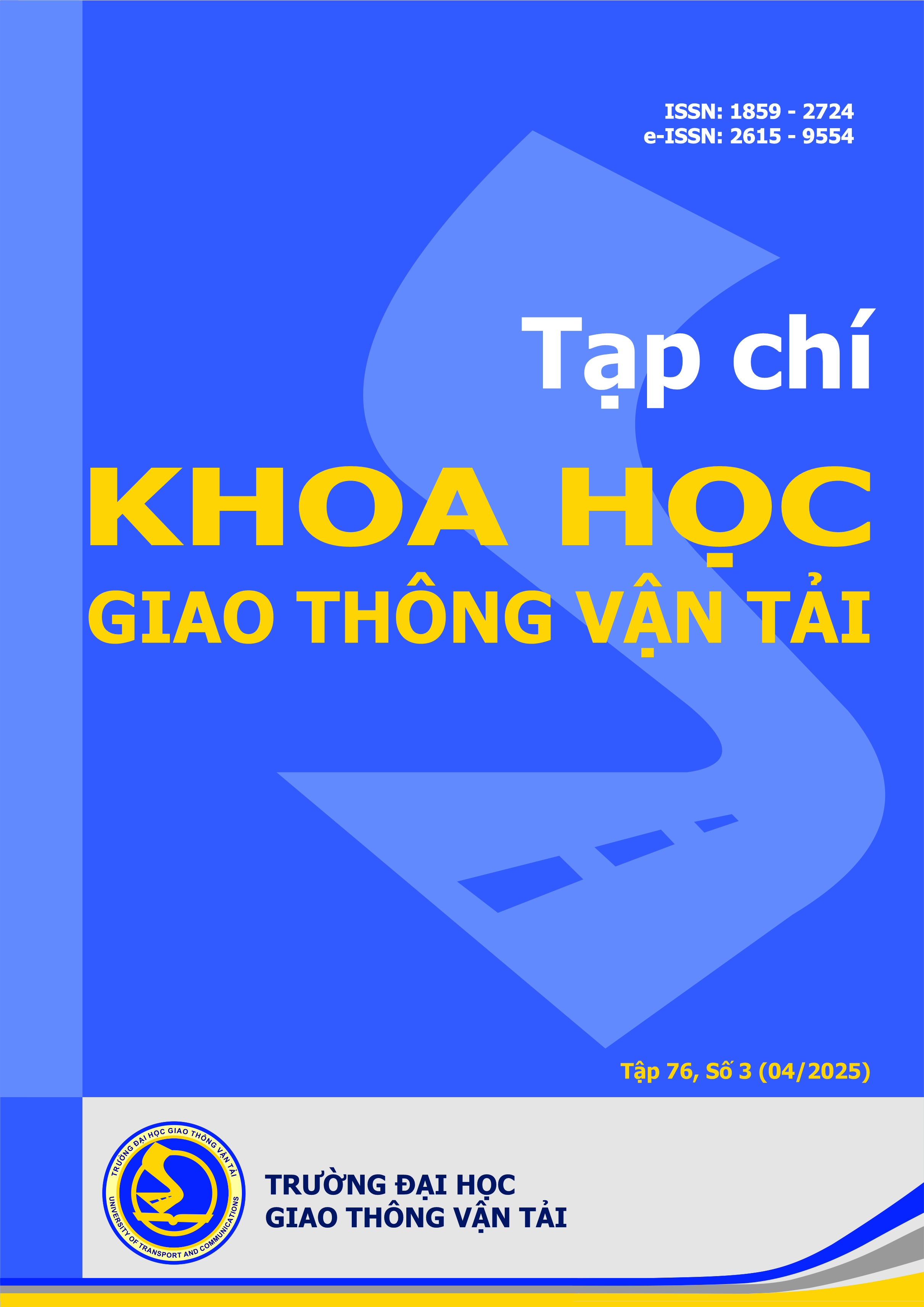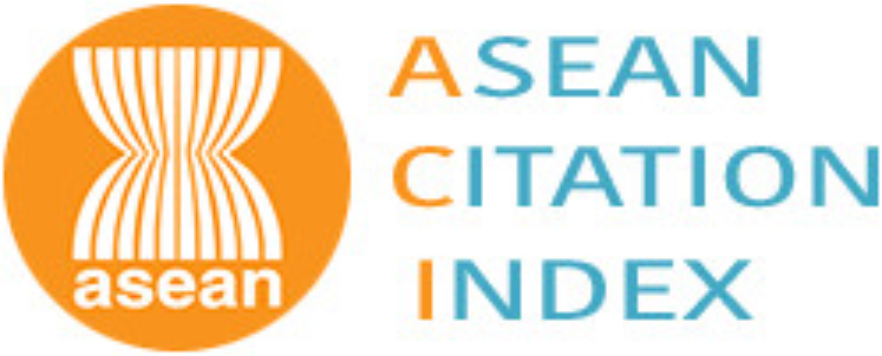Sự hài lòng với dịch vụ buýt của người cao tuổi trong bối cảnh áp dụng chính sách vé miễn phí
Email:
hieunm@utc.edu.vn
Từ khóa:
buýt, vận tải hành khách công cộng, sự hài lòng, người cao tuổi, vé miễn phí
Tóm tắt
Bối cảnh đô thị hóa và già hóa dân số tại Việt Nam đang diễn ra mạnh mẽ, khiến nhu cầu tiếp cận giao thông công cộng của người cao tuổi trở nên cấp thiết, đặc biệt tại các đô thị lớn như Hà Nội. Thủ đô Hà Nội hiện đã phát hành tổng cộng 532.637 thẻ vé miễn phí cho người cao tuổi. Bài báo trình bày một cách khoa học quá trình nghiên cứu các yếu tố ảnh hưởng đến sự hài lòng của hành khách là người cao tuổi đối với dịch vụ buýt trong bối cảnh áp dụng giá vé miễn phí ở Hà Nội, Việt Nam. Kết quả nghiên cứu chỉ ra rằng hành khách là nữ giới và ở độ tuổi cao hơn sẽ có xu hướng hài lòng hơn với dịch vụ buýt. Hành khách cao tuổi sẽ chịu ảnh hưởng lớn nhất bởi tính tiếp cận và sự an toàn khi họ đánh giá sự hài lòng của bản thân đối với dịch vụ. Chính sách giá vé miễn phí cũng là một yếu tố có tác động đáng kể đến sự hài lòng của hành khách và bên cạnh đó là các yếu tố như tính nhanh chóng kịp thời và thoải mái tiện nghi. Kết quả này nhấn mạnh rằng chính sách giá vé miễn phí đóng vai trò quan trọng đến sự hài lòng và thu thút người cao tuổi sử dụng dịch vụ buýt nhưng những yếu tố quyết định nhất vẫn là các đặc tính của dịch vụ. Do đó, các doanh nghiệp buýt cần phải tiếp tục nỗ lực để phát triển dịch vụ của mình trở nên thân thiện hơn với người cao tuổi.Tài liệu tham khảo
[1]. M.H. Nguyen, Research on the Application of International Standards of Bus Rapid Transit (BRT) - The Case Study of Kim Ma - Yen Nghia Corridor, Journal of Science and Technology - University of Danang, 9 (2016) 19–23.
[2]. T.T. Ha, M.H. Nguyen, Sử dụng đa yếu tố phân tích tuyến bus nhanh (BRT) Kim Mã - Yên Nghĩa ở Hà Nội, Tạp chí khoa học Giao thông Vận tải, 61 (2017).
[3]. Khac D.T., Quoc C.D., Efficiency measurement of bus routes in Hanoi city: an application of data envelopment analysis (DEA), 1(2020) 368–379. https://doi.org/10.25073/tcsj.71.4.6
[4]. L. Hoang Thuy, H. Nguyen Thi Hong, H. Phan Thi Thu, T. Nguyen Hoang, Accessibility to public transport from the perspective of the aged people in developing countries: a case study in Hanoi, Vietnam, 73 (2022) 344–358. https://doi.org/10.47869/tcsj.73.4.1
[5]. J. Perone, Advantages and Disadvantages of Fare-Free Transit Policy, World Transit Research (2002). https://www.worldtransitresearch.info/research/4210.
[6]. M.A. Al-Rashid, Y.A. Shamsul Harumain, H.C. Goh, Z. Ali, M. Nadeem, T. Campisi, Perceived norms of public transport use as the determinants of older adults’ social exclusion: Evidence from Pakistan, Cities, 137 (2023) 104264. https://doi.org/10.1016/j.cities.2023.104264
[7]. G. Andrews, G.P. Parkhurst, J. Shaw, Y.O. Susilo, The grey escape: How and why are older people really using their free bus pass?, in: UK, 2011. https://www.researchgate.net/publication/279477421_The_grey_escape_How_and_why_are_older_people_really_using_their_free_bus_pass.
[8]. L. Cheng, J. Wang, A. Paez, Mobility of older adults and the living environment: Introduction, Journal of Transport Geography, 106 (2023) 103525. https://doi.org/10.1016/j.jtrangeo.2022.103525
[9]. A.A. Laverty, C. Millett, Potential impacts of subsidised bus travel for older people, Journal of Transport & Health, 2 (2015) 32–34. https://doi.org/10.1016/j.jth.2014.08.004
[10]. S. Mah, R. Mitra, The effects of a free bus program on older adults travel behaviour: A case study of a Canadian suburban municipality, Case Studies on Transport Policy, 5 (2017) 460–466. https://doi.org/10.1016/j.cstp.2017.05.003
[11]. R.J. Hjorthol, L. Levin, A. Sirén, Mobility in different generations of older persons: The development of daily travel in different cohorts in Denmark, Norway and Sweden, Journal of Transport Geography, 18 (2010) 624–633. https://doi.org/10.1016/j.jtrangeo.2010.03.011
[12]. M.H. Nguyen, T.T. Ha, S.S. Tu, T.C. Nguyen, Impediments to the bus rapid transit implementation in developing countries – a typical evidence from Hanoi, International Journal of Urban Sciences, 4 (2019) 464–483. https://doi.org/10.1080/12265934.2019.1577747
[13]. N.S.A. Sukor, S. Airak, S.A. Hassan, “More Than a Free Bus Ride”—Exploring Young Adults’ Perceptions of Free Bus Services Using a Qualitative Approach: A Case Study of Penang, Malaysia, Sustainability, 13 (2021) 3294. https://doi.org/10.3390/su13063294
[14]. N. Hashim, M.I. Hamzah, 7P’s: A Literature Review of Islamic Marketing and Contemporary Marketing Mix, Procedia - Social and Behavioral Sciences, 130 (2014) 155–159. https://doi.org/10.1016/j.sbspro.2014.04.019
[15]. E. Sogbe, S. Susilawati, T.C. Pin, Scaling up public transport usage: a systematic literature review of service quality, satisfaction and attitude towards bus transport systems in developing countries, Public Transp, (2024) 1–44. https://doi.org/10.1007/s12469-024-00367-6
[16]. A. Parasuraman, V.A. Zeithaml, L.L. Berry, SERVQUAL: A multiple-item scale for measuring consumer perceptions of service quality, Journal of Retailing, 64 (1988) 12–37.
[17]. M.H. Nguyen, D. Pojani, Why are Hanoi students giving up on bus ridership?, Transportation, (2022). https://doi.org/10.1007/s11116-021-10262-9
[18]. Z. Al-Ayyash, M. Abou-Zeid, Investigating commute satisfaction differences of private car users and public transport users in a developing country context, Transportation, 46 (2019) 515–536. https://doi.org/10.1007/s11116-019-10000-2
[19]. J.N. GITHUI, T. OKAMURA, F. Nakamura, The Structure of Users’ Satisfaction on Urban Public Transport Service in Developing Country: the Case of Nairobi, (2009). https://doi.org/10.11175/eastpro.2009.0.232.0
[20]. V.B. Tavares, S.T. Lucchesi, A.M. Larranaga, H.B.B. Cybis, Influence of public transport quality attributes on user satisfaction of different age cohorts, Case Studies on Transport Policy, 9 (2021) 1042–1050. https://doi.org/10.1016/j.cstp.2021.04.018
[21]. Arup, Texas A&M Transportation Institute, KFH Group, Inc, Parsons Brinckerhoff, Inc, Kittelson & Assoc, Inc, TCRP Report 165 - Transit Capacity and Quality of Service Manual. Third Edition, Washington, D.C., 2013. http://www.worldtransitresearch.info/research/4941
[22]. M.H. Nguyen, Evaluating the Service Quality of the First Bus Rapid Transit Corridor in Hanoi City and Policy Implications, in: D. Tien Bui, H.T. Tran, X.-N. Bui (Eds.), Proceedings of the International Conference on Innovations for Sustainable and Responsible Mining, Springer International Publishing, Cham, 2021: pp. 98–123. https://doi.org/10.1007/978-3-030-60269-7_6
[23]. S. Singh, Assessment of Passenger Satisfaction with Public Bus Transport Services: A Case Study of Lucknow City (India), Studies in Business and Economics, 11 (2016) 107–128. https://doi.org/10.1515/sbe-2016-0039
[24]. B. Barabino, E. Deiana, P. Tilocca, Measuring service quality in urban bus transport: a modified SERVQUAL approach, International Journal of Quality and Service Sciences, 4 (2012) 238–252. https://doi.org/10.1108/17566691211269567
[25]. T.K. Ojo, Quality of public transport service: an integrative review and research agenda, Transportation Letters, 11 (2019) 104–116. https://doi.org/10.1080/19427867.2017.1283835
[26]. M.F.A. Bakar, S. Norhisham, H.Y. Katman, C.M. Fai, N.N.I.M. Azlan, N.S.S. Samsudin, Service Quality of Bus Performance in Asia: A Systematic Literature Review and Conceptual Framework, Sustainability, 14 (2022) 7998. https://doi.org/10.3390/su14137998
[27]. G.A. Churchill, C. Surprenant, An Investigation into the Determinants of Customer Satisfaction, Journal of Marketing Research, 19 (1982) 491–504. https://doi.org/10.1177/002224378201900410
[28]. M.H. Nguyen, Factors influencing home-based telework in Hanoi (Vietnam) during and after the COVID-19 era, Transportation, 48 (2021) 3207–3238. https://doi.org/10.1007/s11116-021-10169-5
[29]. D. Collins, C. Tisdell, Gender and Differences in Travel Life Cycles, Journal of Travel Research, 41 (2002) 133–143. https://doi.org/10.1177/004728702237413
[30]. P. Kowal, J. Dowd, Definition of an older person. Proposed working definition of an older person in Africa for the MDS Project., 2001. https://doi.org/10.13140/2.1.5188.9286
[2]. T.T. Ha, M.H. Nguyen, Sử dụng đa yếu tố phân tích tuyến bus nhanh (BRT) Kim Mã - Yên Nghĩa ở Hà Nội, Tạp chí khoa học Giao thông Vận tải, 61 (2017).
[3]. Khac D.T., Quoc C.D., Efficiency measurement of bus routes in Hanoi city: an application of data envelopment analysis (DEA), 1(2020) 368–379. https://doi.org/10.25073/tcsj.71.4.6
[4]. L. Hoang Thuy, H. Nguyen Thi Hong, H. Phan Thi Thu, T. Nguyen Hoang, Accessibility to public transport from the perspective of the aged people in developing countries: a case study in Hanoi, Vietnam, 73 (2022) 344–358. https://doi.org/10.47869/tcsj.73.4.1
[5]. J. Perone, Advantages and Disadvantages of Fare-Free Transit Policy, World Transit Research (2002). https://www.worldtransitresearch.info/research/4210.
[6]. M.A. Al-Rashid, Y.A. Shamsul Harumain, H.C. Goh, Z. Ali, M. Nadeem, T. Campisi, Perceived norms of public transport use as the determinants of older adults’ social exclusion: Evidence from Pakistan, Cities, 137 (2023) 104264. https://doi.org/10.1016/j.cities.2023.104264
[7]. G. Andrews, G.P. Parkhurst, J. Shaw, Y.O. Susilo, The grey escape: How and why are older people really using their free bus pass?, in: UK, 2011. https://www.researchgate.net/publication/279477421_The_grey_escape_How_and_why_are_older_people_really_using_their_free_bus_pass.
[8]. L. Cheng, J. Wang, A. Paez, Mobility of older adults and the living environment: Introduction, Journal of Transport Geography, 106 (2023) 103525. https://doi.org/10.1016/j.jtrangeo.2022.103525
[9]. A.A. Laverty, C. Millett, Potential impacts of subsidised bus travel for older people, Journal of Transport & Health, 2 (2015) 32–34. https://doi.org/10.1016/j.jth.2014.08.004
[10]. S. Mah, R. Mitra, The effects of a free bus program on older adults travel behaviour: A case study of a Canadian suburban municipality, Case Studies on Transport Policy, 5 (2017) 460–466. https://doi.org/10.1016/j.cstp.2017.05.003
[11]. R.J. Hjorthol, L. Levin, A. Sirén, Mobility in different generations of older persons: The development of daily travel in different cohorts in Denmark, Norway and Sweden, Journal of Transport Geography, 18 (2010) 624–633. https://doi.org/10.1016/j.jtrangeo.2010.03.011
[12]. M.H. Nguyen, T.T. Ha, S.S. Tu, T.C. Nguyen, Impediments to the bus rapid transit implementation in developing countries – a typical evidence from Hanoi, International Journal of Urban Sciences, 4 (2019) 464–483. https://doi.org/10.1080/12265934.2019.1577747
[13]. N.S.A. Sukor, S. Airak, S.A. Hassan, “More Than a Free Bus Ride”—Exploring Young Adults’ Perceptions of Free Bus Services Using a Qualitative Approach: A Case Study of Penang, Malaysia, Sustainability, 13 (2021) 3294. https://doi.org/10.3390/su13063294
[14]. N. Hashim, M.I. Hamzah, 7P’s: A Literature Review of Islamic Marketing and Contemporary Marketing Mix, Procedia - Social and Behavioral Sciences, 130 (2014) 155–159. https://doi.org/10.1016/j.sbspro.2014.04.019
[15]. E. Sogbe, S. Susilawati, T.C. Pin, Scaling up public transport usage: a systematic literature review of service quality, satisfaction and attitude towards bus transport systems in developing countries, Public Transp, (2024) 1–44. https://doi.org/10.1007/s12469-024-00367-6
[16]. A. Parasuraman, V.A. Zeithaml, L.L. Berry, SERVQUAL: A multiple-item scale for measuring consumer perceptions of service quality, Journal of Retailing, 64 (1988) 12–37.
[17]. M.H. Nguyen, D. Pojani, Why are Hanoi students giving up on bus ridership?, Transportation, (2022). https://doi.org/10.1007/s11116-021-10262-9
[18]. Z. Al-Ayyash, M. Abou-Zeid, Investigating commute satisfaction differences of private car users and public transport users in a developing country context, Transportation, 46 (2019) 515–536. https://doi.org/10.1007/s11116-019-10000-2
[19]. J.N. GITHUI, T. OKAMURA, F. Nakamura, The Structure of Users’ Satisfaction on Urban Public Transport Service in Developing Country: the Case of Nairobi, (2009). https://doi.org/10.11175/eastpro.2009.0.232.0
[20]. V.B. Tavares, S.T. Lucchesi, A.M. Larranaga, H.B.B. Cybis, Influence of public transport quality attributes on user satisfaction of different age cohorts, Case Studies on Transport Policy, 9 (2021) 1042–1050. https://doi.org/10.1016/j.cstp.2021.04.018
[21]. Arup, Texas A&M Transportation Institute, KFH Group, Inc, Parsons Brinckerhoff, Inc, Kittelson & Assoc, Inc, TCRP Report 165 - Transit Capacity and Quality of Service Manual. Third Edition, Washington, D.C., 2013. http://www.worldtransitresearch.info/research/4941
[22]. M.H. Nguyen, Evaluating the Service Quality of the First Bus Rapid Transit Corridor in Hanoi City and Policy Implications, in: D. Tien Bui, H.T. Tran, X.-N. Bui (Eds.), Proceedings of the International Conference on Innovations for Sustainable and Responsible Mining, Springer International Publishing, Cham, 2021: pp. 98–123. https://doi.org/10.1007/978-3-030-60269-7_6
[23]. S. Singh, Assessment of Passenger Satisfaction with Public Bus Transport Services: A Case Study of Lucknow City (India), Studies in Business and Economics, 11 (2016) 107–128. https://doi.org/10.1515/sbe-2016-0039
[24]. B. Barabino, E. Deiana, P. Tilocca, Measuring service quality in urban bus transport: a modified SERVQUAL approach, International Journal of Quality and Service Sciences, 4 (2012) 238–252. https://doi.org/10.1108/17566691211269567
[25]. T.K. Ojo, Quality of public transport service: an integrative review and research agenda, Transportation Letters, 11 (2019) 104–116. https://doi.org/10.1080/19427867.2017.1283835
[26]. M.F.A. Bakar, S. Norhisham, H.Y. Katman, C.M. Fai, N.N.I.M. Azlan, N.S.S. Samsudin, Service Quality of Bus Performance in Asia: A Systematic Literature Review and Conceptual Framework, Sustainability, 14 (2022) 7998. https://doi.org/10.3390/su14137998
[27]. G.A. Churchill, C. Surprenant, An Investigation into the Determinants of Customer Satisfaction, Journal of Marketing Research, 19 (1982) 491–504. https://doi.org/10.1177/002224378201900410
[28]. M.H. Nguyen, Factors influencing home-based telework in Hanoi (Vietnam) during and after the COVID-19 era, Transportation, 48 (2021) 3207–3238. https://doi.org/10.1007/s11116-021-10169-5
[29]. D. Collins, C. Tisdell, Gender and Differences in Travel Life Cycles, Journal of Travel Research, 41 (2002) 133–143. https://doi.org/10.1177/004728702237413
[30]. P. Kowal, J. Dowd, Definition of an older person. Proposed working definition of an older person in Africa for the MDS Project., 2001. https://doi.org/10.13140/2.1.5188.9286
Tải xuống
Chưa có dữ liệu thống kê

Nhận bài
07/03/2025
Nhận bài sửa
09/04/2025
Chấp nhận đăng
10/04/2025
Xuất bản
15/04/2025
Chuyên mục
Công trình khoa học
Kiểu trích dẫn
Đỗ Thị Hương, L., Phan Thị Thanh, Q., Nguyễn Thị Hồng, T., Phạm Thị, D., Đỗ Minh, Đạt, Trần Minh, C., Nguyễn Thị Nguyệt, Q., & Nguyễn Minh, H. (1744650000). Sự hài lòng với dịch vụ buýt của người cao tuổi trong bối cảnh áp dụng chính sách vé miễn phí. Tạp Chí Khoa Học Giao Thông Vận Tải, 76(3), 198-212. https://doi.org/10.47869/tcsj.76.3.1
Số lần xem tóm tắt
340
Số lần xem bài báo
136









